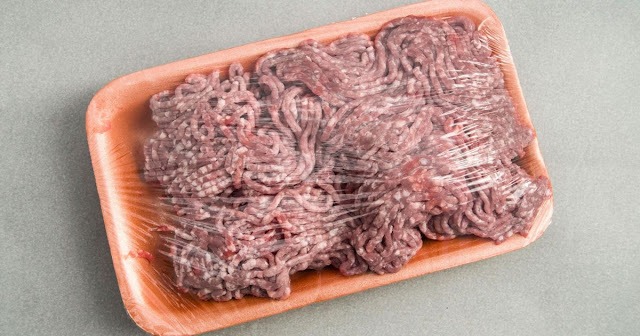ADVERTISEMENT
#### **2. Check the Texture**
The texture of ground beef can also give you clues about its freshness. Fresh ground beef should feel firm and slightly moist but not sticky or slimy. If the meat has become excessively slimy, tacky, or mushy to the touch, it is likely spoiled and should not be consumed. This is a sign that bacteria have begun to break down the meat.
#### **3. Look for Discoloration and Spots**
While a grayish hue alone doesn’t always mean the meat is bad, it’s important to check for any unusual discoloration, such as green or black spots, which may indicate mold or bacterial contamination. If you notice any of these signs, it’s best to discard the meat.
#### **4. Examine the Expiration Date**
Always check the expiration date or “use by” date on the packaging. Even if the meat looks gray, if it’s still within the expiration date and has been stored properly, it might still be safe to eat. If the meat is past the expiration date, it’s better to err on the side of caution and throw it away.
#### **5. Storage and Handling Practices**
Proper storage is key to maintaining the freshness and safety of ground beef. Ground beef should always be stored in the refrigerator at a temperature of 40°F (4°C) or below. If it’s been left out at room temperature for more than two hours, it should be discarded. Additionally, ground beef should be cooked or frozen within one to two days of purchase for optimal safety.
If you have leftovers or meat that you won’t be able to use within this time frame, freezing it is a good option. Freezing ground beef prevents bacterial growth and keeps the meat safe for longer periods.
### **What About Freezing Ground Beef? Does It Change Color?**
Freezing ground beef can sometimes cause changes in color, but this is generally not an indicator of spoilage. When ground beef is frozen, the moisture in the meat can cause it to lose its bright red color, often resulting in a grayish or brownish appearance. As long as the meat has been stored properly (in an airtight package or freezer bag) and hasn’t been sitting in the freezer for too long, the color change doesn’t affect its safety. However, if you notice any signs of freezer burn (dry, white patches), the meat may have lost some of its flavor and texture, but it is still safe to eat.
### **Tips for Storing Ground Beef Properly**
To avoid encountering gray ground beef in the first place, it’s important to follow proper storage and handling practices:
– **Refrigeration**: Store ground beef in the coldest part of the refrigerator, typically in the back. Keep it in its original packaging or transfer it to an airtight container to reduce exposure to air.
– **Freezing**: If you’re not able to use ground beef within a few days of purchase, freeze it. Ground beef can be stored in the freezer for up to four months. Be sure to wrap it tightly to prevent freezer burn.
– **Packaging**: If you buy ground beef in bulk, consider dividing it into smaller portions for freezing. This allows you to defrost only what you need without having to thaw the entire batch.
– **Thawing**: When thawing frozen ground beef, do so in the refrigerator overnight or in the microwave using the defrost setting. Never thaw meat at room temperature, as this can promote bacterial growth.
### **Conclusion: Should You Eat Gray Ground Beef?**
In conclusion, ground beef that looks gray is not automatically unsafe to eat. The color change is often due to natural oxidation and the lack of oxygen, which can occur even when the meat is still fresh. However, it’s essential to consider other factors—such as smell, texture, and the expiration date—when assessing the safety of gray ground beef.
As long as the meat doesn’t show any signs of spoilage, such as an off smell, sliminess, or unusual discoloration, it is likely safe to cook and eat. Always follow
proper storage practices to keep your ground beef fresh, and when in doubt, trust your senses to guide you in making the right decision.
By understanding how color changes in ground beef and knowing the signs of spoilage, you can confidently handle and enjoy your meat, ensuring a safe and satisfying meal every time.
